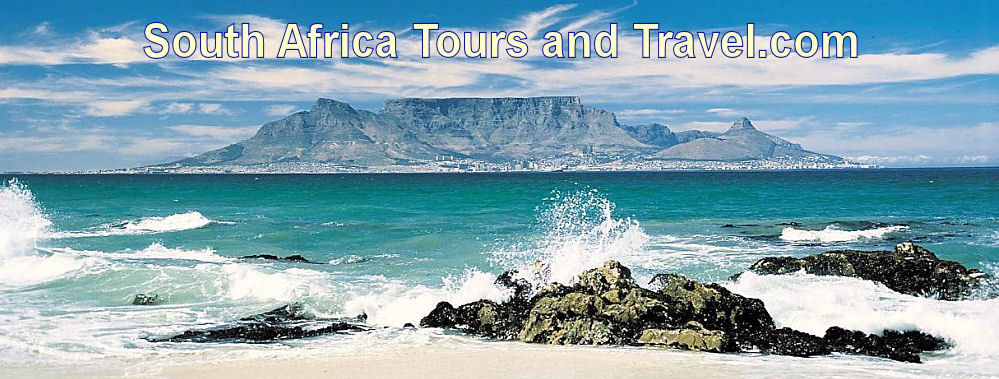You are here:
-
Home
›
-
National parks in South Africa
›
-
Kruger National Park
›
-
Kruger National Park wildlife
Kruger National Park wildlife,
a feast of African flora and fauna
It is the high level of diversity of plant and
animal life that makes the Kruger National Park wildlife experience a feast for the eyes, ears and
other senses.
One marvels at the frequent and sudden changes in landscape, vegetation, bird life and animal
variety and density.
South Africa's bushveld and savannah regions are still home to large numbers of the mammals
universally associated with Africa.
Since the early 1900s the Kruger National Park has been one of the few places where the unique
wildlife of the African savanna's and forests has been able to survive.
Here you can see the best of South Africa's flora and fauna. Next to the Big Five (Lion, Leopard,
Elephant, Buffalo and Rhino), this includes:
- Over 148 species of mammals
- The fastest land mammal
- Over 506 bird species
- Over 1990 plant species, including 456 tree and shrub species
- Over 118 reptile species
- Over 34 species of Amphibians
- Over 53 species of fish
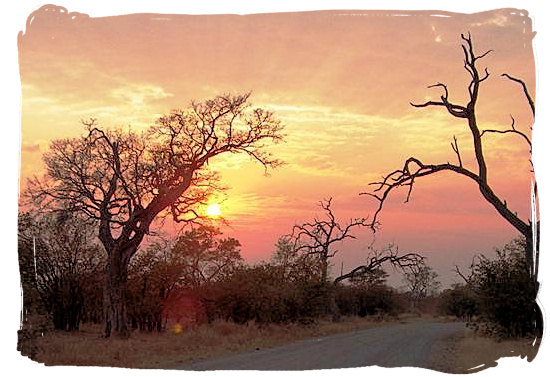
Sunset landscape in the Kruger National park - Kruger National Park wildlife
Current population of the Big Five in the Kruger National Park is
estimated at;
- 1,700 Lions
- 13,750 Elephants
- 37,130 Buffalo
- 1,000 Leopards
- 7,000 White Rhinos and 450 Black Rhinos
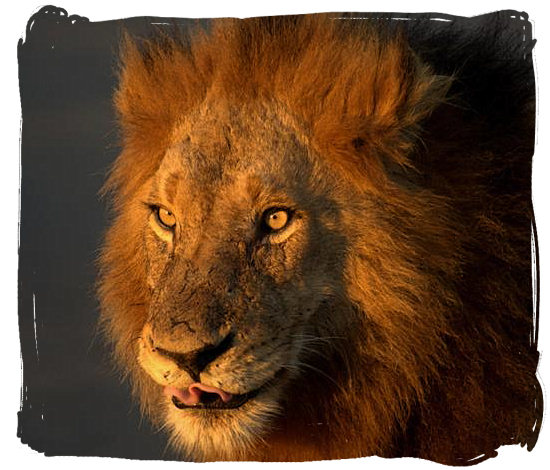
Portrait of the King of animals - Kruger National Park wildlife
The fastest land mammal, the cheetah, is without doubt the fastest creature on land in the world,
capable of speeds of up to 114 km/hr, and able to accelerate from 0 to 110 km/hr in only 3 seconds.
With a comparatively small population number of 200 in the Kruger National Park, the Cheetah is a
vulnerable species. They can also be found in the Kgalagadi Transfrontier Park in the Northern Cape
province and other game reserves in Mpumalanga, KwaZulu-Natal and North West province.
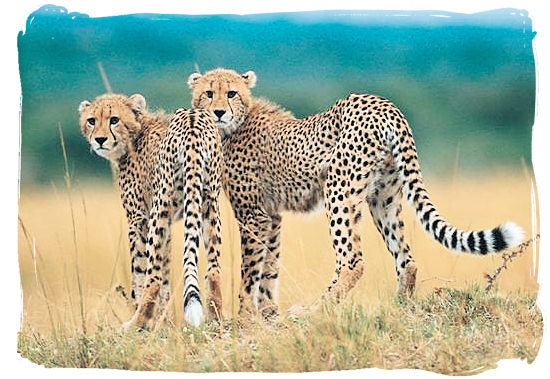
Cheetahs in the Kruger Park - Kruger National Park wildlife
copyright © South African tourism
Over 506 bird species, some of which are not to be found elsewhere in South Africa. Roughly half the number of bird species
are summer migrants from Europe, Asia and elsewhere in Africa.
The best time for birding in the Kruger National Park is between October and March when all the migrants are in residence and food
is plentiful. Most of the raptors found in Southern Africa occur in the Kruger National Park.
The far north of the Park (Pafuri and Punda Maria regions) is regarded as one of the birding mecca 's of the country, with many
regional rarities to be found, yet birding throughout the entire park is excellent.
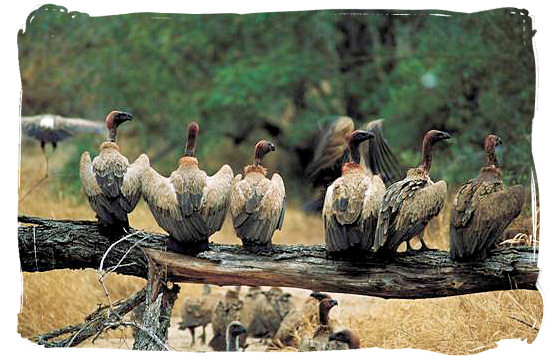
Vulture get-together - Kruger National Park wildlife
copyright © South African tourism
Over 1990 plant species, including 456 tree and shrub species, in a landscape that conjures up the
image of a typical African savannah with its (often dry) grasses and more-or-less thickly scattered shrubs
and thorn trees. The Kruger National Park is home to a spectacular array of plants, shrubs and trees of
which some of the oldest trees in the world.
A few Baobab trees in the north of the Kruger National Park are believed to be over 3000 years old. The
northern half of the park, north of the Olifants river is predominantly mopane veld, while the southern
half below the Olifants river consists mostly of thorn veld.
The Park can further be divided into 6 eco-systems: Baobab sandveld, Mopane scrub, Lebombo Knobthorn-Marula
bushveld, mixed Acacia thicket, Combretum-silver Cluster-leaf woodland on granite and riverine forest.
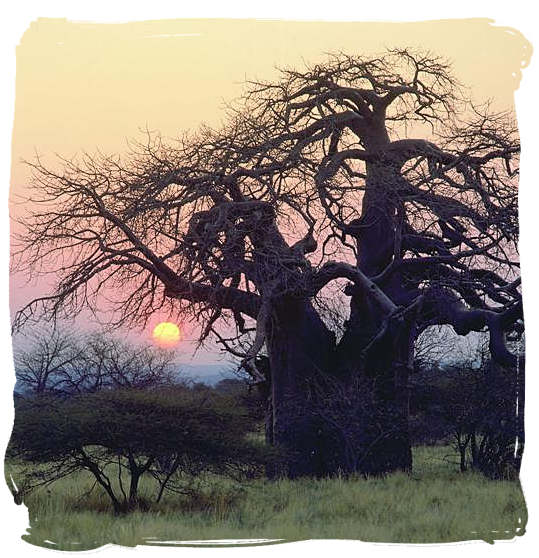
Old Baobab tree at sunset - Kruger National Park wildlife
copyright © South African tourism
Over 118 reptile species, including Africa’s biggest snake, the non-venomous African Rock Python,
which is considered vulnerable, because it is in demand in the traditional medicine market and amongst
reptile collectors.
There are well over 100 types of snakes. While about half of them are non-venomous, others like the puff
adder and the black mamba can be very deadly.
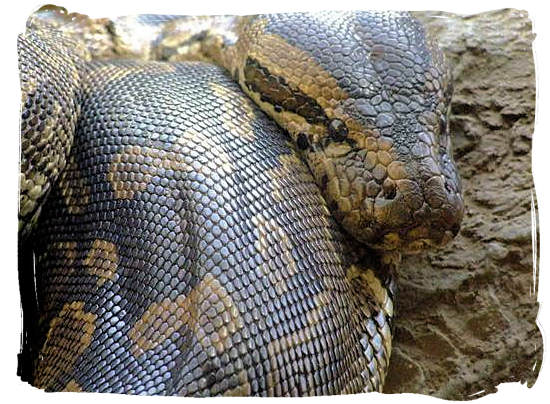
The Rock Python, Africa’s biggest snake - Kruger National Park wildlife
South Africa has one river-dwelling reptile that is, as much as any of the Big Five, a symbol of Africa,
the Nile Crocodile. It still rules many stretches of river and estuary, lakes and pools. There is usually
great curiosity and fear surrounding these reptiles.
Despite their slow appearance, Nile Crocodiles are top-level predators and very dangerous in their chosen
environment. They have been seen attacking and killing lions.
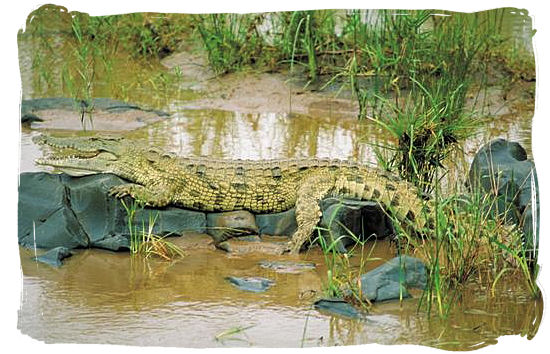 Nile Crocodile lazing in the sun - Kruger National Park wildlife
Nile Crocodile lazing in the sun - Kruger National Park wildlife
copyright © South African tourism
Over 34 species of Amphibians. The country's comparative dryness accounts for its fairly low
amphibian count of 34 species. Apart from scientific value, Amphibians are generally not considered to be
of great intrinsic or economic importance.
The African Bullfrog is one of the largest frogs in South Africa. It measures up to 9.5 inches (24 cm) and
may weigh over two kilograms. It has a chubby body with a broad head, and has an olive-greenish coloured
bumpy skin.
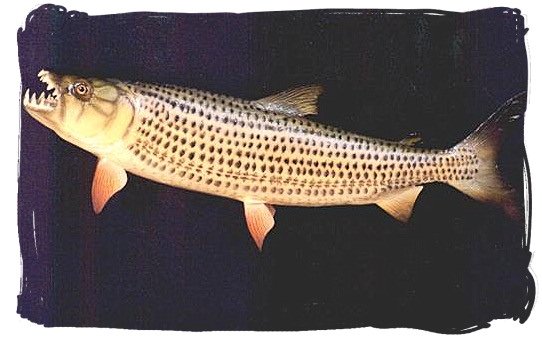
The African Tiger fish - Kruger National Park wildlife
And finally, over 53 species of fish, including one of the rarest ones in the world, the
Notobranchius Rachovi, which survives in mud when water holes dry up. The Tiger fish is well known for its
vigorous fighting when caught by an angler.
Top of Page
-
Home
›
-
National parks in South Africa
›
-
Kruger National Park
›
-
Kruger National Park wildlife
